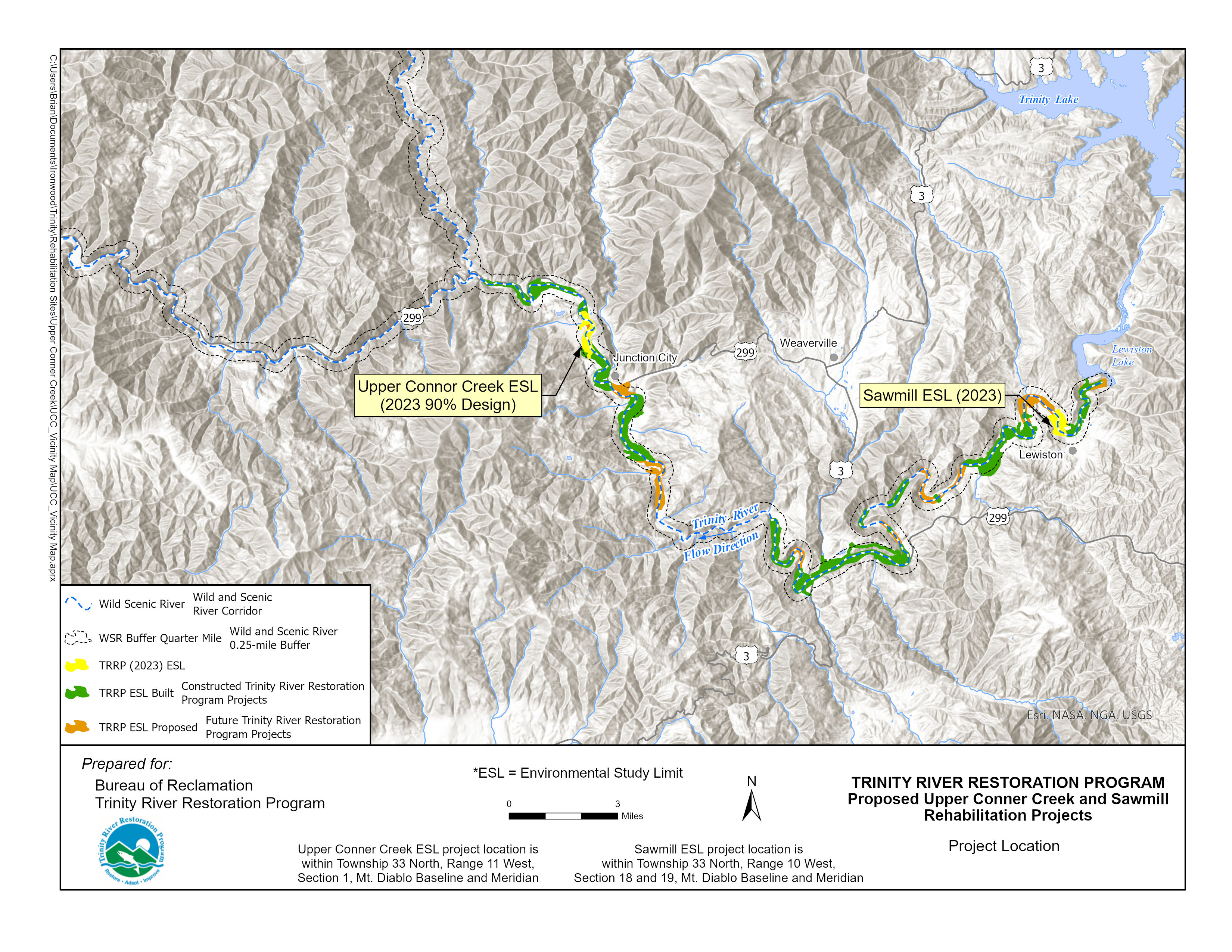
The TRRP completed an Environmental Assessment/Initial Study to meet the requirements of the National Environmental Policy Act and the California Environmental Quality Act. The NEPA effort was led by Reclamation with the Bureau of Land Management Redding Field Office as a cooperating agency. The CEQA effort was led by the North Coast Regional Water Quality Control Board. The environmental study evaluated and disclosed the potential environmental effects of implementing each project. The environmental study analyzed the effects of the Proposed Action and a No Action Alternative.
Proposed Project Timeline
Public Scoping: December 4, 2023 – December 17, 2023 (COMPLETE)
Draft EA for Public Comment (30 day period): May 2 – May 31, 2024 (COMPLETE)
Final EA and Decision: July 24, 2024 (COMPLETE)
Proposed Implementation: Upper Conner Creek (Junction City) – 2024-2027, Sawmill (Lewiston) – as early as spring 2025.
Learn more about each project
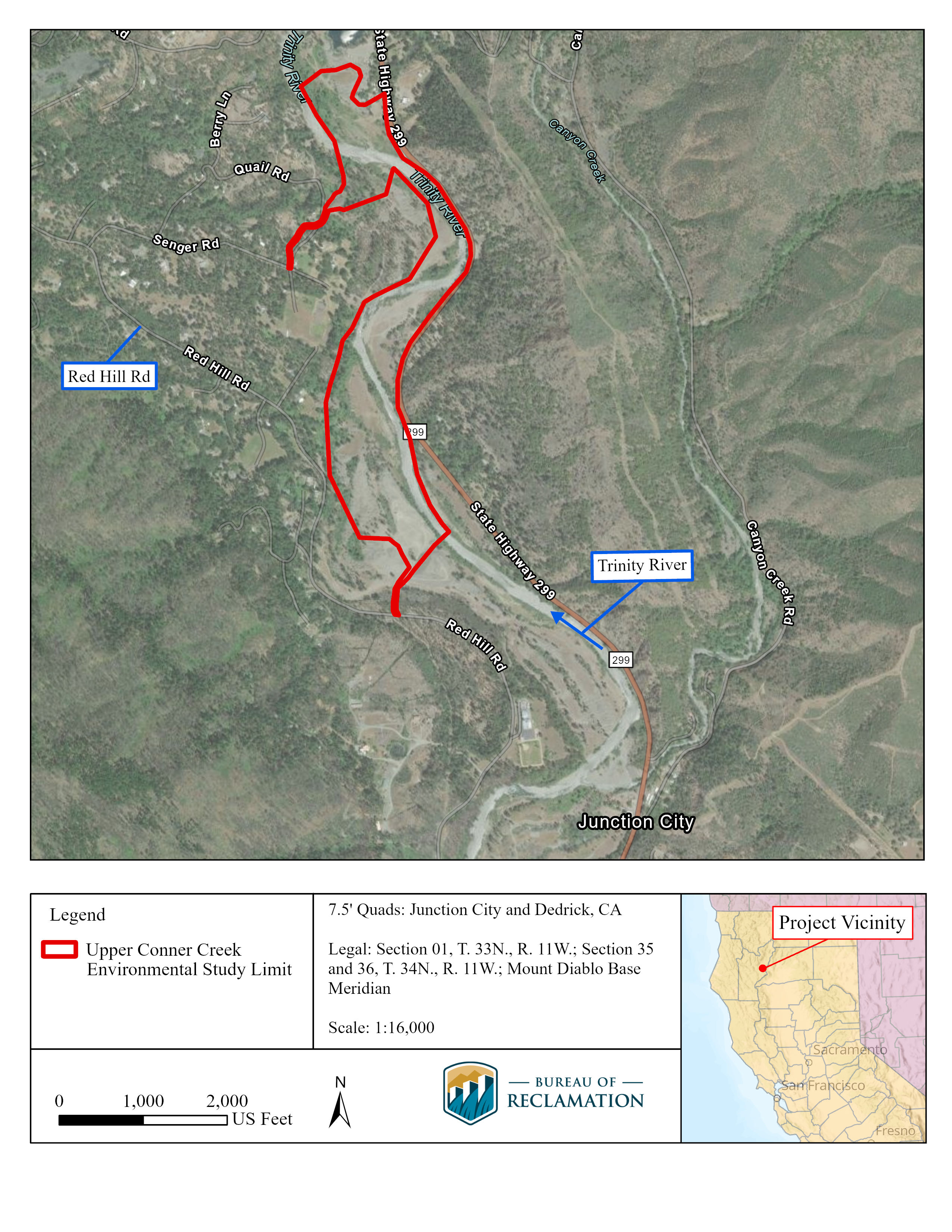
To access information regarding the proposed Upper Conner Creek Channel Rehabilitation (Junction City) please click the button below:
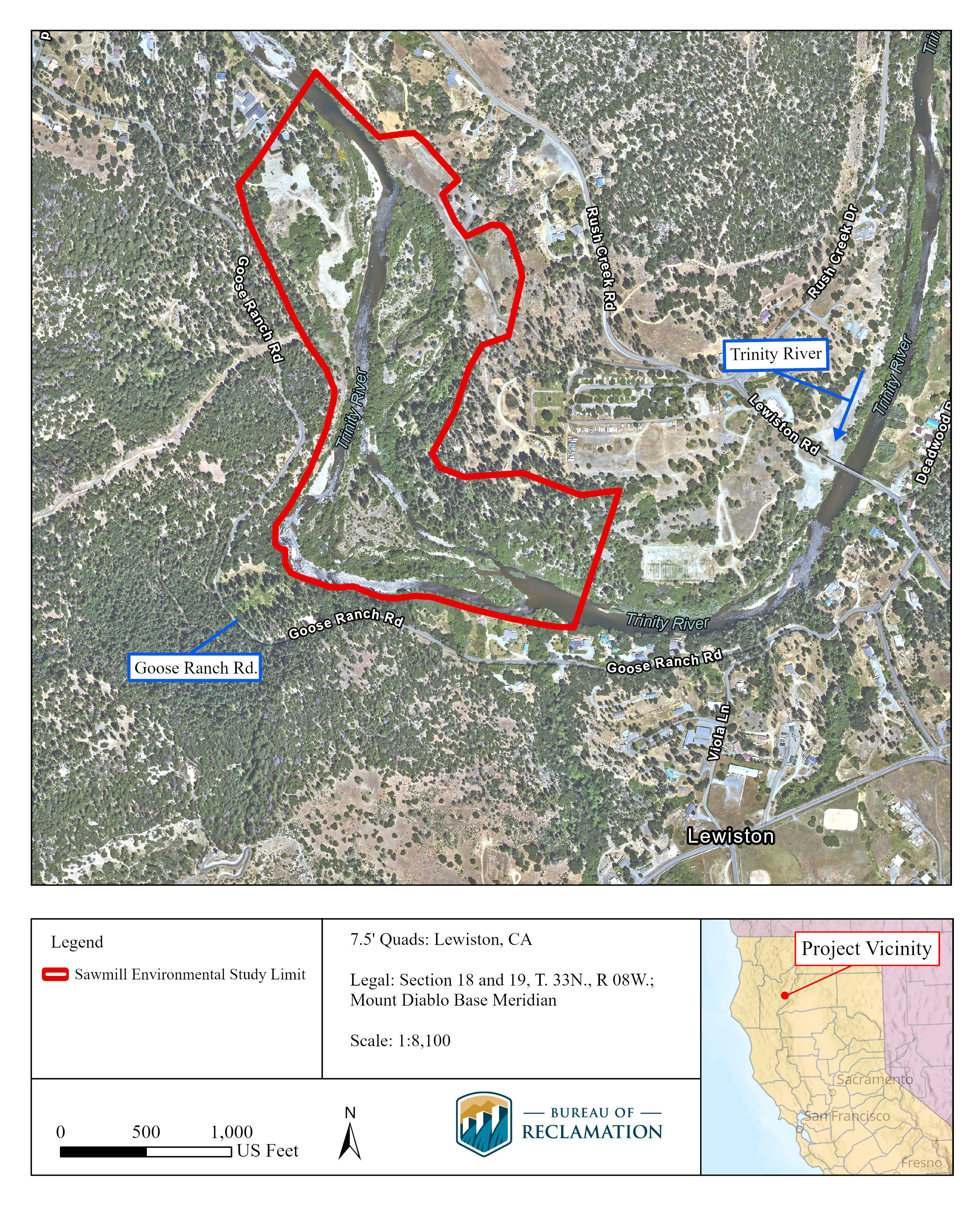
To access information regarding the proposed Sawmill Gravel Processing Site Rehabilitation Project (Lewiston) please click the button below:
Background
The U.S. Department of Interior established the Trinity River Restoration Program in 2000 with the goal of restoring the fisheries of the Trinity River affected by dam construction and related water diversions of the Trinity River Division of the Central Valley Project. Baseline ecological conditions of the Trinity River at the time the TRRP was established also reflected the effects of past mining and timber harvesting in the watershed. These effects are the target of the Program’s restoration activities.
Administered by the Bureau of Reclamation, the TRRP is a partnership of federal and state agencies, tribes, and Trinity County. The Program’s objective is to restore the processes and attributes of an ecologically functioning river system, which should in turn recover diminished salmon and steelhead populations while retaining Trinity and Lewiston Dams’ deliveries of water and power to California’s Central Valley.
The TRRP’s restoration strategy is to foster a natural, dynamic river system that promotes all life-stages of salmonids through the following actions. The Program works to achieve this goal with the five following restoration strategies;
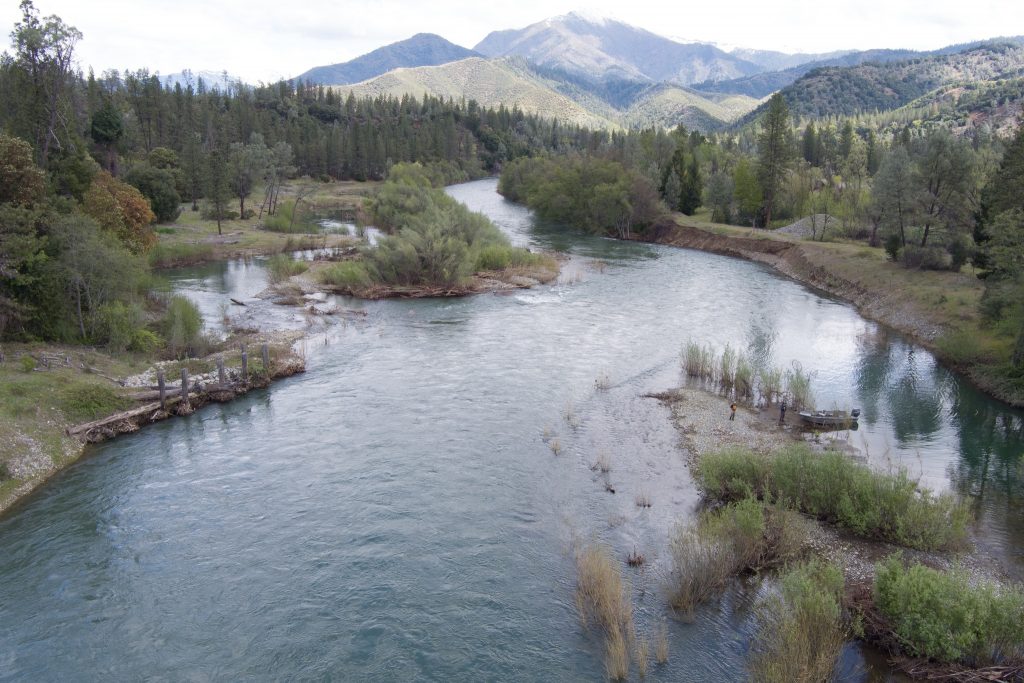
Variable flow management: Restoration flow releases are designed to help establish and maintain complex habitat features in the river. Flow management uses a variable flow regime based on five water year types designated by the California Department of Water Resources.
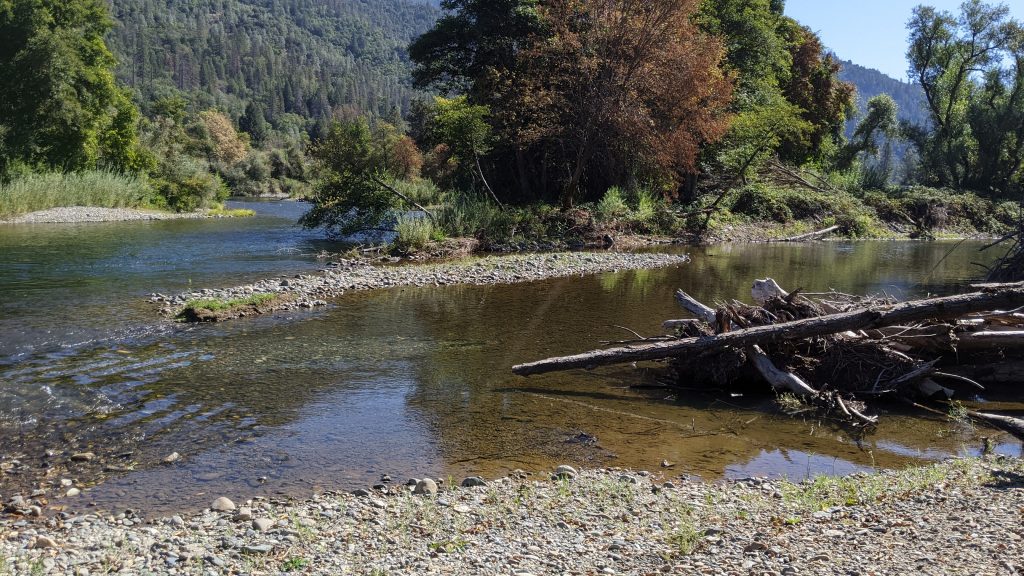
Channel rehabilitation: restoring the functional floodplain of the river, which has been channelized and simplified by managed river flows and mining.
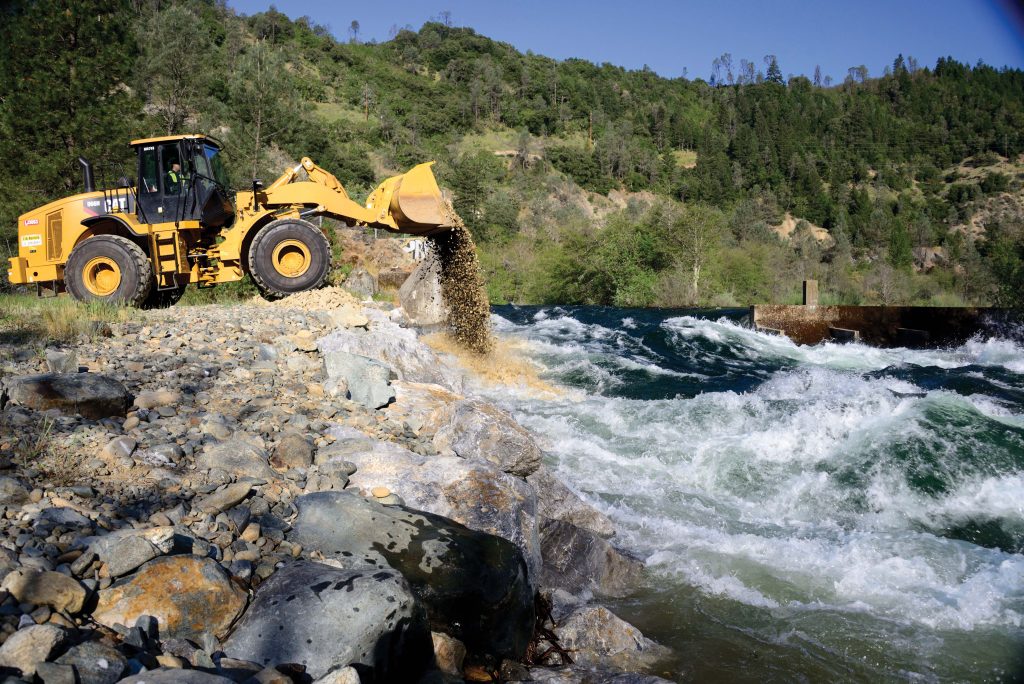
Sediment management: reintroducing spawning-sized gravel (aka coarse sediment) to the river and controlling fine sediment input from upslope areas. Gravel needed for spawning and habitat diversity is blocked by the dam, and moves downstream during high-flow events. The reintroduction of gravel improves fish and macroinvertebrate habitat.
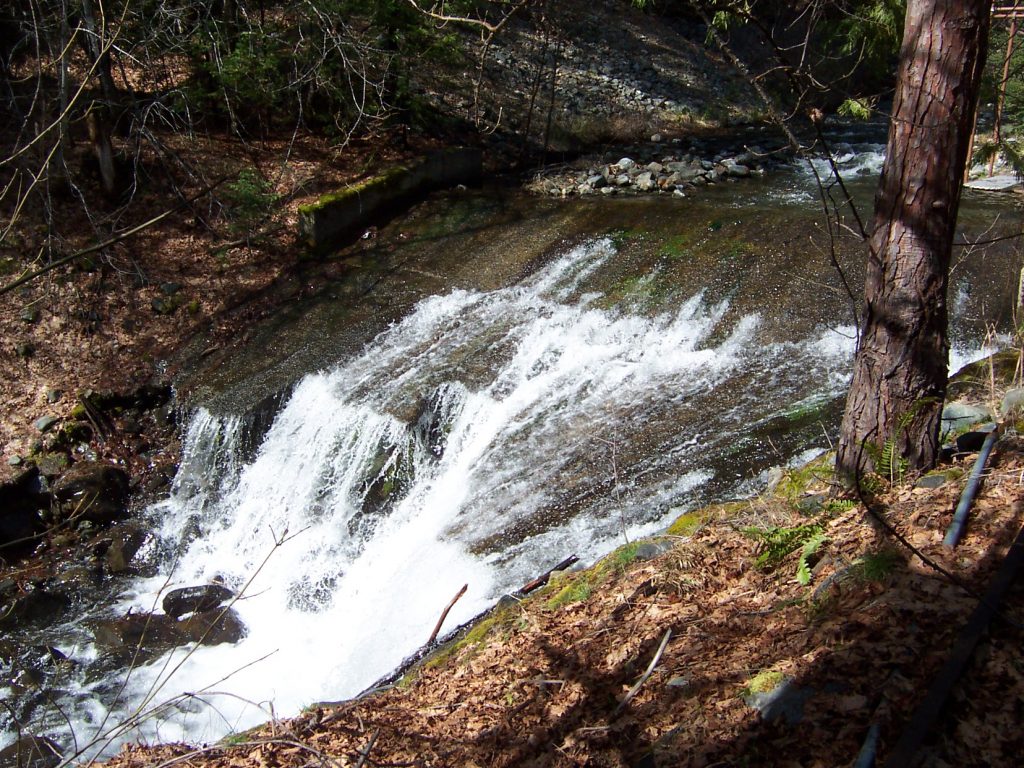
Watershed restoration: addressing negative impacts that have resulted from poor land management in the basin. Watershed restoration activities include decreasing the input of fine sediment from Trinity River tributaries and increasing aquatic habitats.
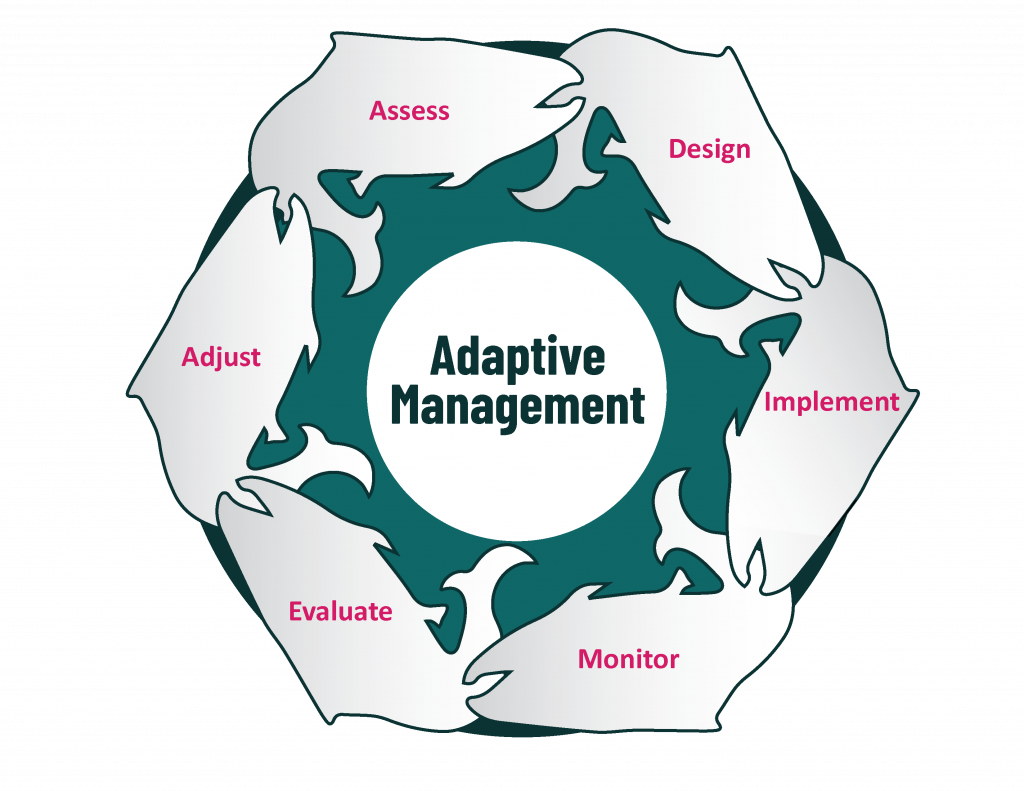
Adaptive management: monitoring, evaluating, and improving the effectiveness of river restoration actions.
